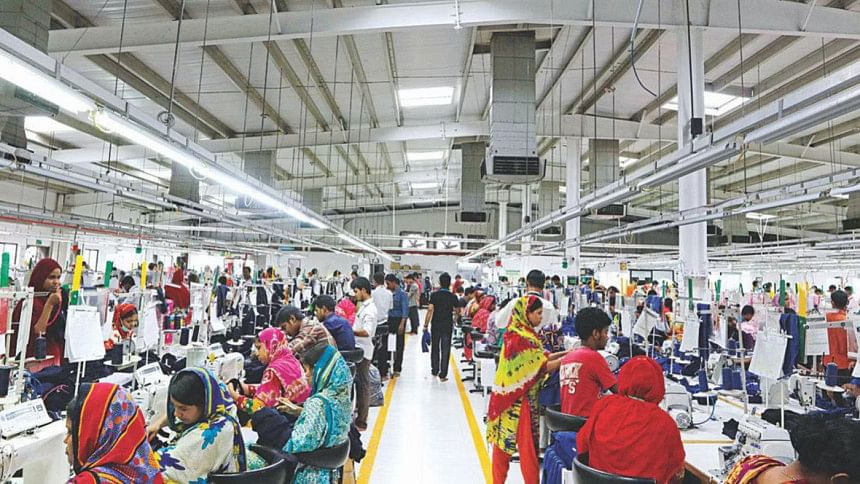Bangladesh retains second position in RMG export to EU

Bangladesh retained second position in apparel shipments to the European Union (EU) in the first two months of the current year with a 22.75 per cent share of the trade bloc's overall garment imports, according to data from EUROSTAT.
China remained the top supplier at the time, providing 26.27 per cent of the EU's total apparel imports.
However, the EU's overall apparel imports for January and February declined by $322 million, or 2.03 per cent, compared to the corresponding period of 2022.
In terms of quantity, the EU's clothing imports fell sharply by 10.09 per cent year-on-year, or 70 million kilogrammes (kgs), in the January-February period.
Apparel imports from China fell 13.11 per cent year-on-year to $4.08 billion at the time with shipments from the top sourcing destination having shrivelled by 16.42 per cent, or 32 million kgs.
In contrast, the EU's apparel imports from Bangladesh increased by 5.47 per cent year-on-year, or $183 million, during the January-February period.
However, the quantity of shipments declined by 3.02 per cent, or 6 million kgs, at the same time.
Among the top 10 apparel sourcing countries for the EU, Bangladesh, India, Vietnam and Pakistan showed positive growth while Turkey and some other nations saw decline.
The EU's imports from Turkey, its third largest apparel source, fell by 11 per cent year-on-year during the January-February period, when the country shipped $1.82 billion worth of clothing items.
The global economy and trade scenario are showing signs of depression, which is clearly affecting the European market as evinced by the data, according to Faruque Hassan, president of the Bangladesh Garment Manufacturers and Exporters Association (BGMEA).
Although Bangladesh has been performing relatively better than its major competitors, the growth seen in the first two months of 2023 was largely due to inflated raw material prices and subsequent hikes in the production cost.
So, the value of goods exported went up while the overall volume fell, Hassan said in an email to BGMEA members.
"However, we need to cautiously monitor the trend in major markets, focus on alternative strategies, such as reducing dependence on single markets or products, and ensure balanced investment plans for backward and forward linkages," he added.
Hassan went on to say that the sale of garment items has slowed a bit in western markets due to high inflation stemming from the ongoing Russia-Ukraine war that began on February 24 last year.
It is due to the war that most global apparel retailers and brands are witnessing a significant build-up of inventory at their stores.
"So, they have lowered their work orders for new clothing," he said.
Local exporters had been covering the lower demand for garment items by supplying high-end, value-added clothing to secure better prices for the past few months.
However, this is not possible anymore as the demand for such apparel is falling steeply because of the high bank interest rates and inflation resulting from the war, Hassan added.
The unit price of garment items made in Bangladesh increased by 8.75 per cent year-on-year in the January-February period, EUROSTAT data shows.
As such, clothing from the country sold for $18.26 per kg in the EU during the first two months of the year, up from $16.79 per kg in 2022.
The average price of imported garment items in the EU increased by 8.97 per cent to $24.88 per kg in January-February compared to $22.83 per kg in the corresponding period the year before.
China saw the lowest price hike for its clothes in the EU with a 3.97 percent increase while Indonesia witnessed the highest with 22.97 per cent.
Meanwhile, the price of apparel from Turkey saw growth of 13.95 per cent while Vietnam registered 13.01 percent, Cambodia 12.05 per cent, India 9.16 per cent and Morocco 7.78 per cent.

 For all latest news, follow The Daily Star's Google News channel.
For all latest news, follow The Daily Star's Google News channel. 








Comments